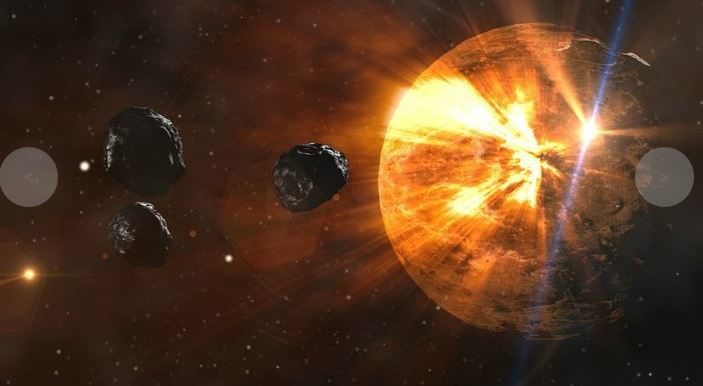The experiments are based on miniature asteroids about 8 to 10 millimeters wide that have been carefully manufactured to reflect the density, rigidity and shape of real asteroids-even the chemical compositions and porosity are realistic. To reflect the diversity of asteroid shapes, spherical, ellipsoidal, and cubical models were created, too. From there, the scientists shot them with a laser and measured the effects, including how much energy per gram of mass was needed to destroy the model. One of the more interesting discoveries they made was that asteroids have weak points-targeting a cavity on a model asteroid required less energy for the whole thing to blow up, meaning that if we ever want to blow an asteroid out of the sky, we'd probably target the cavities.
We joked previously that NASA's nuclear option for dealing with asteroids had finally exonerated Armageddon, but in truth, NASA's plan doesn't involve drilling into an asteroid and setting off subterranean nuclear bombs. This new Russian research however, has one line that sticks out:
In some of the experiments, the laser was targeted at a cavity made in the miniature asteroids ahead of time. By exploiting the cavity, the researchers spent less energy-namely, 500 instead of 650 joules per gram. Similarly, the effect of a buried nuclear bomb is expected to be more pronounced.That's right, a buried nuclear bomb. Michael Bay was right all along.
Much of the research was based on the infamous Chelyabinsk asteroid, a 20-meter-wide meteor that exploded over Russia and injured over 1,000 people. The largest chunk of the meteor was recovered from Lake Chebarkul and studied to create the basis for the lab's model asteroids. It's estimated that if a 200-meter-wide asteroid with a similar composition to the Chelyabinsk meteor was successfully destroyed with a laser, its chunks would burn up relatively harmlessly in the atmosphere. The same result could be accomplished with a nuclear explosion, the lab says.
According to Vladimir Yufa, one of the scientists involved, this new research enables "rapid modeling of the explosion so that the destruction criteria can be calculated promptly. At the moment, there are no asteroid threats, so our team has the time to perfect this technique for use later in preventing a planetary disaster."
They should make sure they have Bruce Willis on speed-dial.




Reader Comments